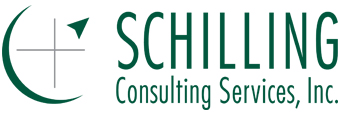Summer is (still) the Best Time to Prepare for Planning
For most organizations, summer is the best time to prepare for Strategic Planning. However, given everything that has transpired in recent years as well as everything that is unfolding, you might be wondering if that is still the case. Here are two good reasons, one internal to your organization, one more externally focused, that you should prepare now for great planning in the fall.
1. Organizational Timing: Most organizations have fiscal years that end in December or June, and it is very helpful if strategic planning is timed to occur in step with the fiscal year. That way, the funds needed to implement tactics over the lifespan of the Plan can be built into yearly budgets. That makes the fall through early winter the ideal time for work sessions focused on developing a new multi-year plan or preparing an annual update. And backing up a little further, that means summer is a great time to accomplish the work that will make those sessions as productive as possible. That includes the research, data gathering, and information analysis comprising the industry, market, and organizational assessments.
2. Adjusting for New Developments: But what about when emerging innovations or major issues such as AI, Health Equity, and Work Force Shortages impact your organization and the communities you serve? The disruption and need to reprioritize experienced by most organizations with Covid19 are still fresh in everyone’s mind. And new developments like these are often the impetus for changing customer needs and expectations, as well as a sudden flourish of innovation as many organizations rush to respond to those changing customer needs and prepare for a “new normal”. From that perspective, this is an important time to be in contact with your customers and stakeholders, and to learn what you can about the innovation occurring both within and beyond your industry.
Right Sizing the Effort: The good news is that these summer preparations can be customized to fit with your organization’s unique Strategic Planning needs. Here are three general scenarios and how you can use these summer months most effectively:
1. New Plan: If you have not prepared a Strategic Plan before, or a new one is long overdue, preparing for the actual planning work sessions is critically important. The depth and scope of the three assessments mentioned earlier strongly relates to the quality and insight of the desired future state...the vision or goals...at the heart of your new Plan. Organizations in this scenario may benefit the most from working with a consultant this summer, one who can help you prepare an affordable research plan and to whom you can outsource much of the assessment work, especially if your resources are already stretched thin.
2. Scheduled Update: If this is an “update” year for a recently developed Strategic Plan, and that update is scheduled for this fall or winter, now is a great time to refresh your assessments and stay on course for that update. Postponing the update at a time when so many things are in flux may mean you fall behind important shifts in your market and industry. An outside consultant can help you plan where to target efforts to refresh your assessments and get the most out of limited resources and time.
3. Business as Usual? If you do not need a new Strategic Plan and there is no “update” looming in the next 6 – 9 months, you may have the least amount to do this summer of any of these three scenarios. However, the number and magnitude of recent events may still warrant a limited and targeted amount of research including customer needs feedback, strategy affirmation / adjustment input from stakeholders, and identification of emerging new / best practices relevant to your current strategies. Pressed for time? Outsourcing this limited, but important, research may be the answer.
For most organizations, the summer months are the best time to prepare for great Strategic Planning, and this year is no exception. And another emerging trend, the increasing comfort level of people working remotely, can make this work easier and more affordable than ever.
I hope you have a chance to really enjoy these summer months, safely of course. If I can be of any help with your planning needs, contact me at your earliest convenience.
Jeff

 A Whole New Ball Game However, none of this armchair knowledge could have prepared for me for the actual experience of guiding a 700 horsepower race car around 18° banked turns at 150 mph. Even in the beginner package, you’re driving a fully equipped race-ready NASCAR on a championship series course. It’s very different than driving your own car to work or the grocery store, and you’ve got about three to four laps to try to adjust. I quickly found myself making many adjustments. For example, my sense of timing of when to start turning the wheel as the next curve approached was very “late” at these speeds, at least for the first lap or two. Suddenly, I felt very humble.
A Whole New Ball Game However, none of this armchair knowledge could have prepared for me for the actual experience of guiding a 700 horsepower race car around 18° banked turns at 150 mph. Even in the beginner package, you’re driving a fully equipped race-ready NASCAR on a championship series course. It’s very different than driving your own car to work or the grocery store, and you’ve got about three to four laps to try to adjust. I quickly found myself making many adjustments. For example, my sense of timing of when to start turning the wheel as the next curve approached was very “late” at these speeds, at least for the first lap or two. Suddenly, I felt very humble. Customer Focus Every staff member I interacted with at the NASCAR Racing Experience struck the perfect balance of serious tone and fun, making the whole experience reassuring and enjoyable. I don’t think they could have achieved this without first learning what customers would want (and even be delighted with) in this kind of experience, and then always trying to find ways to make it better. I have seen that same customer (patient) focus over the years at Trinity Health, in their long-standing commitment to seeing the “whole patient” (mind, body, and spirit), and the emphasis on continuous quality and process improvement, all things I learned about as a Talent Development Team member.
Customer Focus Every staff member I interacted with at the NASCAR Racing Experience struck the perfect balance of serious tone and fun, making the whole experience reassuring and enjoyable. I don’t think they could have achieved this without first learning what customers would want (and even be delighted with) in this kind of experience, and then always trying to find ways to make it better. I have seen that same customer (patient) focus over the years at Trinity Health, in their long-standing commitment to seeing the “whole patient” (mind, body, and spirit), and the emphasis on continuous quality and process improvement, all things I learned about as a Talent Development Team member. Then and Now It’s been five years now, but the memories of that experience – the sights, sounds, and exhilaration - are still very clear to me. And some important lessons, first learned years before in a totally different setting, are clear to me as well. And today, I think I understand them at a deeper level, and can see more opportunities where they could be applied, than I did before. I guess that’s what “relearning” can do for you.
Then and Now It’s been five years now, but the memories of that experience – the sights, sounds, and exhilaration - are still very clear to me. And some important lessons, first learned years before in a totally different setting, are clear to me as well. And today, I think I understand them at a deeper level, and can see more opportunities where they could be applied, than I did before. I guess that’s what “relearning” can do for you. It’s about the Process One of the most important things I've found out is that a successful innovation involves much more than the initial spark of an idea. Moving from idea to a market ready change that will be readily adopted is a process with four distinct stages (see diagram at right). Each of these stages has to be consciously and actively managed, or the overall process will be less effective…producing fewer or no real innovations.
It’s about the Process One of the most important things I've found out is that a successful innovation involves much more than the initial spark of an idea. Moving from idea to a market ready change that will be readily adopted is a process with four distinct stages (see diagram at right). Each of these stages has to be consciously and actively managed, or the overall process will be less effective…producing fewer or no real innovations. If I’ve convinced you that the time is ripe for more collaboration, what about that skill set I mentioned back in 2015? I’ve listed some of the key ones here (see sidebar). In some cases, you may find it helpful to engage an outside facilitator who can bring objectivity and additional expertise. I also have a short simple guide to thinking about the different levels of collaboration, from the most informal, small scale of efforts to major, formal ones such as mergers and acquisitions. It also describes the critical success factors to all levels of collaboration. If interested, just e-mail me and I’ll send it along.
If I’ve convinced you that the time is ripe for more collaboration, what about that skill set I mentioned back in 2015? I’ve listed some of the key ones here (see sidebar). In some cases, you may find it helpful to engage an outside facilitator who can bring objectivity and additional expertise. I also have a short simple guide to thinking about the different levels of collaboration, from the most informal, small scale of efforts to major, formal ones such as mergers and acquisitions. It also describes the critical success factors to all levels of collaboration. If interested, just e-mail me and I’ll send it along. So, depending on your idea and situation, there are actually many potential paths from idea to project start (see diagram at right).
So, depending on your idea and situation, there are actually many potential paths from idea to project start (see diagram at right).